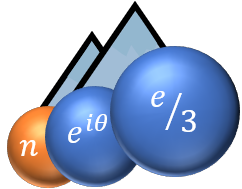Anyonic statistics is a unique and fascinating property of 2d systems, where fundamental excitations can exhibit a statistics which is neither bosonic nor fermionic, but intermediate between the two. In particular, anyonic statistics should apply to the quasiparticles of the Fractional Quantum Hall Effect (FQHE), as was predicted theoretically more than 30 years ago. The experimental demonstration of anyonic statistics has been elusive for a long time. Only very recently, two experiments studying electronic transport in chiral edge states of the FQHE, but using very different setups, have been able to demonstrate unambiguously the anyonic statistics [1-2]. These impressive experiments have triggered an intense theoretical activity, whose progress will lead to a better and deeper understanding of anyonic statistics and its consequences. However, one obvious drawback of both theoretical proposals and experimental detection schemes for the statistical angle of quasiparticles resides in the fact that the setups typically involve several quantum point contacts (QPC), constituting both a theoretical and an experimental challenge.
In this talk, we show that using narrow periodic pulses of voltage, periodically exciting fractional charges, and measuring the Hong-Ou-Mandel noise [3] at the output of a single QPC, one obtains a signal which is directly related to the anyonic statistics. To this aim, we first explain the unique properties of the time-dependent tunnelling current at a QPC when a single fractional quasiparticle is incident, which are associated with braiding of the fractional quasiparticle with the thermal anyonic excitations occurring at the QPC. Our quantitative predictions, obtained with perturbative calculations performed using the non-equilibrium Keldysh Green function formalism, could be checked with current experimental techniques, providing a relatively easy path for the study of fractional statistics.
[1] H. Bartolomei et al., Science 368, 173 (2020)
[2] J. Nakamura et al., Nat. Phys. 16, 931 (2020)
[3] C. K. Hong, Z. Y. Ou, and L. Mandel, Phys. Rev. Lett. 59, 2044 (1987)

 PDF version
PDF version
